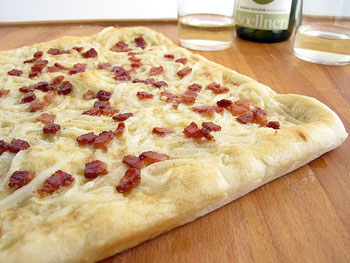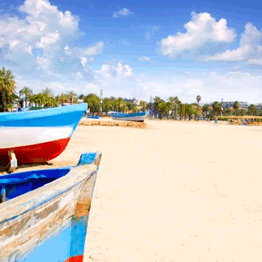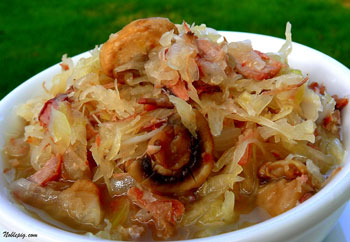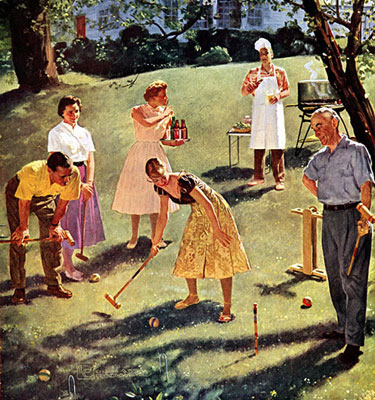 When I was a student living in Paris, one of my favorite rituals was to treat myself to a tiny lemon tart at a local patisserie after class. There were dozens of shops to choose from along my walk from the Sorbonne to my small apartment near the Place des Victoires.
When I was a student living in Paris, one of my favorite rituals was to treat myself to a tiny lemon tart at a local patisserie after class. There were dozens of shops to choose from along my walk from the Sorbonne to my small apartment near the Place des Victoires.
If I was feeling extravagant I would stop by Fauchon near the Place de la Madeleine, and leave with a lemon tart boxed in their trademark hot pink packaging and black and white bag; otherwise, there were plenty of other neighborhood shops that offered tasty tarts at a more reasonable price.
I still love a lemony dessert, especially at the end of a great meal. This is one of my favorite recipes - very lemony, but with a rich creamy filling. It’s from Luscious Lemon Desserts by Lori Longbotham and is the best version I’ve had outside of Paris – the zest in the filling and in the crust gives it a great burst of lemon flavor.

 Chicken Marengo is an amazing Italian savory dish named for being themeal Napoleon Bonaparte feasted on after the Battle of Marengo (a battle between the French and the Austrians in the 1800s).
Chicken Marengo is an amazing Italian savory dish named for being themeal Napoleon Bonaparte feasted on after the Battle of Marengo (a battle between the French and the Austrians in the 1800s). I am very much intrigued by the unique food of Alsace, the tiny region that shares a border and many culinary similarities with Germany. My love for Alsatian food stems from my visit a few years ago to
I am very much intrigued by the unique food of Alsace, the tiny region that shares a border and many culinary similarities with Germany. My love for Alsatian food stems from my visit a few years ago to  A couple of summer months filled with many beachside lunches of paella so good and so long ago that I am still chasing the memories of a perfect paella. My sister and I were in the Catalonian village of Arenys de Mar for a good part of the summer. On the wide, white beach surrounded by rugged hills were a handful of rustic 'restaurants' that made only paella over wood fires. They were makeshift structures covered with bright pieces of miss-matched canvas tacked down to keep the strong Spanish sun and ocean breeze at bay. These little makeshift restaurants were always busy for lunch, the only meal that they served and I had my favorite one.
A couple of summer months filled with many beachside lunches of paella so good and so long ago that I am still chasing the memories of a perfect paella. My sister and I were in the Catalonian village of Arenys de Mar for a good part of the summer. On the wide, white beach surrounded by rugged hills were a handful of rustic 'restaurants' that made only paella over wood fires. They were makeshift structures covered with bright pieces of miss-matched canvas tacked down to keep the strong Spanish sun and ocean breeze at bay. These little makeshift restaurants were always busy for lunch, the only meal that they served and I had my favorite one. My Dad was crazy about this; it's what I recall him craving the most. He always happily obliged my mother as chief taster when she was in the kitchen trying to get the flavors just right.
My Dad was crazy about this; it's what I recall him craving the most. He always happily obliged my mother as chief taster when she was in the kitchen trying to get the flavors just right.
